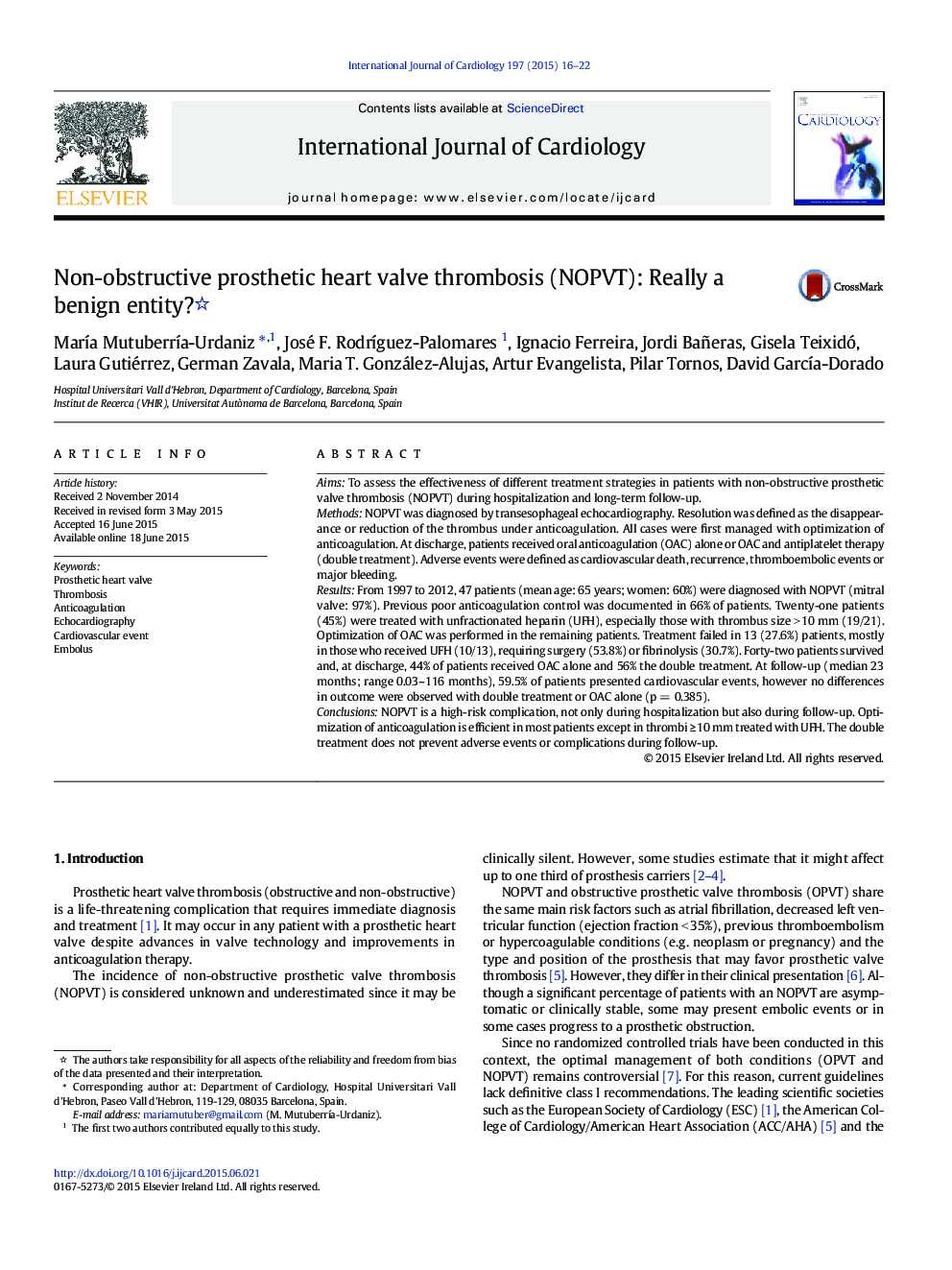| Article ID | Journal | Published Year | Pages | File Type |
|---|---|---|---|---|
| 2928903 | International Journal of Cardiology | 2015 | 7 Pages |
AimsTo assess the effectiveness of different treatment strategies in patients with non-obstructive prosthetic valve thrombosis (NOPVT) during hospitalization and long-term follow-up.MethodsNOPVT was diagnosed by transesophageal echocardiography. Resolution was defined as the disappearance or reduction of the thrombus under anticoagulation. All cases were first managed with optimization of anticoagulation. At discharge, patients received oral anticoagulation (OAC) alone or OAC and antiplatelet therapy (double treatment). Adverse events were defined as cardiovascular death, recurrence, thromboembolic events or major bleeding.ResultsFrom 1997 to 2012, 47 patients (mean age: 65 years; women: 60%) were diagnosed with NOPVT (mitral valve: 97%). Previous poor anticoagulation control was documented in 66% of patients. Twenty-one patients (45%) were treated with unfractionated heparin (UFH), especially those with thrombus size > 10 mm (19/21). Optimization of OAC was performed in the remaining patients. Treatment failed in 13 (27.6%) patients, mostly in those who received UFH (10/13), requiring surgery (53.8%) or fibrinolysis (30.7%). Forty-two patients survived and, at discharge, 44% of patients received OAC alone and 56% the double treatment. At follow-up (median 23 months; range 0.03–116 months), 59.5% of patients presented cardiovascular events, however no differences in outcome were observed with double treatment or OAC alone (p = 0.385).ConclusionsNOPVT is a high-risk complication, not only during hospitalization but also during follow-up. Optimization of anticoagulation is efficient in most patients except in thrombi ≥ 10 mm treated with UFH. The double treatment does not prevent adverse events or complications during follow-up.
